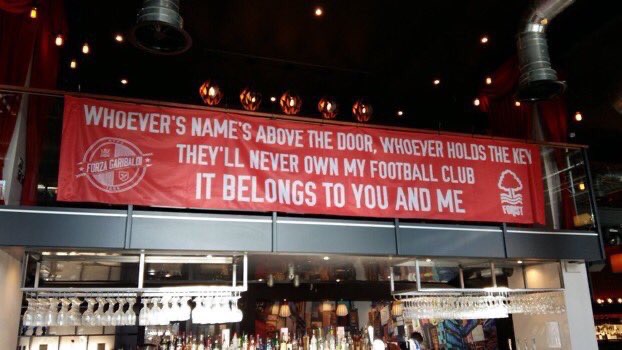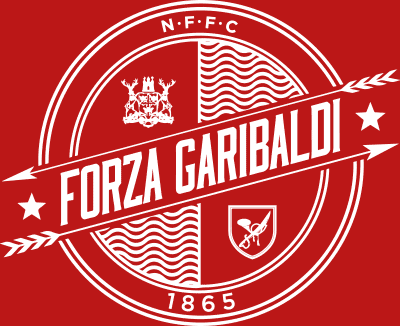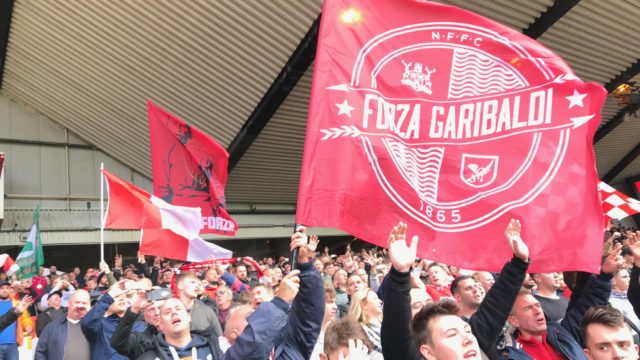100 Years of Supporter Mobilisation at NFFC
Given the flabbergasting end to the season it has been suggested that the lack of supporters inside the ground was possibly one factor in our downfall. While far from the only issue and certainly not the primary reason we collapsed so badly, it’s possible that we, all of us, could have made the difference.
Every team continued without fans but, with some obvious bias and having seen how this team has responded to fan backing, perhaps Forest’s supporters could have been worthy of the smallest of advantages. Given the swing of only one goal a traditional, Covid free end of the season with our collective influence may have been sufficient to see us over the right side of that top six threshold. But we’ll never know for sure.
***
Supporter contribution has been a significant part of Forest in the last few years. Record season card sales and huge followings at home and away alongside attempts from within to engage the fanbase have certainly played a part in helping to lift the club off the floor. Groups like ours at Forza Garibaldi have tried to assist and nurture this while aiming to place supporter led efforts at the heart of the club.
We can pinpoint the emergence of a modern wave of fan movement to around 2016 as NFFC lurched into a dark and sinister world towards the end of the previous ownership. Forza Garibaldi came to life around the same time as the Nottingham Forest Supporters Trust and the Bandy & Shinty publication. This was followed by other networks and community groups which are still being created today in the UK and further afield.
A Forest fanbase of sorts can be traced back to our first ever game against Notts County on 22nd March 1866; a 1-0 win on the Forest Recreation Ground. A crowd of 600 were in attendance. It’s likely that some level of supporter organisations would have sprang to life alongside the growing Nottingham Forest F.C but it was the spring of 1920 when a recognised movement began – 100 years ago this year.
On Wednesday 14th April 1920 a ‘large and enthusiastic inaugural meeting’ took place at the Mechanics Hall in Nottingham city centre (1). The suggestion to form a supporters club had been proposed by a local publication The Football News and the gathering was chaired by Mr J.L Bailey.
The suggestion to form a supporters group was explained to the crowd by a former Forest player, Mr. T. E Roberts, who heralded the success of a similar venture at Port Vale. They key aims were a positive supportive network and providing a financial backing to the actual football club through membership subscriptions and various fundraising activities. In return those signed up would, amongst other privileges, be granted a vote at the annual general meeting of Nottingham Forest F.C.
One initial objective was set by Roberts to generate 500 new season ticket sales which would assist the club financially by £800.
A temporary board was appointed and a collection was held which raised £2 10s.
The follow up meeting was reported in the Nottingham Journal (2) under the heading:
‘FOREST SUPPORTERS GIVE IMPETUS TO THEIR CLUB MOVEMENT’
A steering group were appointed to lead the newly formed supporters club with a Mr Arthur W. Hayes elected as chairman. Room 8 of the YMCA building, Morley House on Shakespeare Street was to be a meeting point every Monday between 7 -9pm. Subscriptions for membership was set at 2s 6d.
A key milestone of the Supporter Club’s early development was that they received the backing from officials at Forest. At the football club’s AGM the Forest Committee Chairman, W.T Hancock welcomed the new fan organisation and recognised the value such a body could bring (3).
The newly formed Nottingham Forest Supporter’s Club (NFSC) began to explore a series of community events that would raise money for NFFC. On 2nd August what appears to be the first of these occasions took place at the City Ground – an open air Drive & Dance which featured a card game known as whist and other attractions such as a waltz competition.
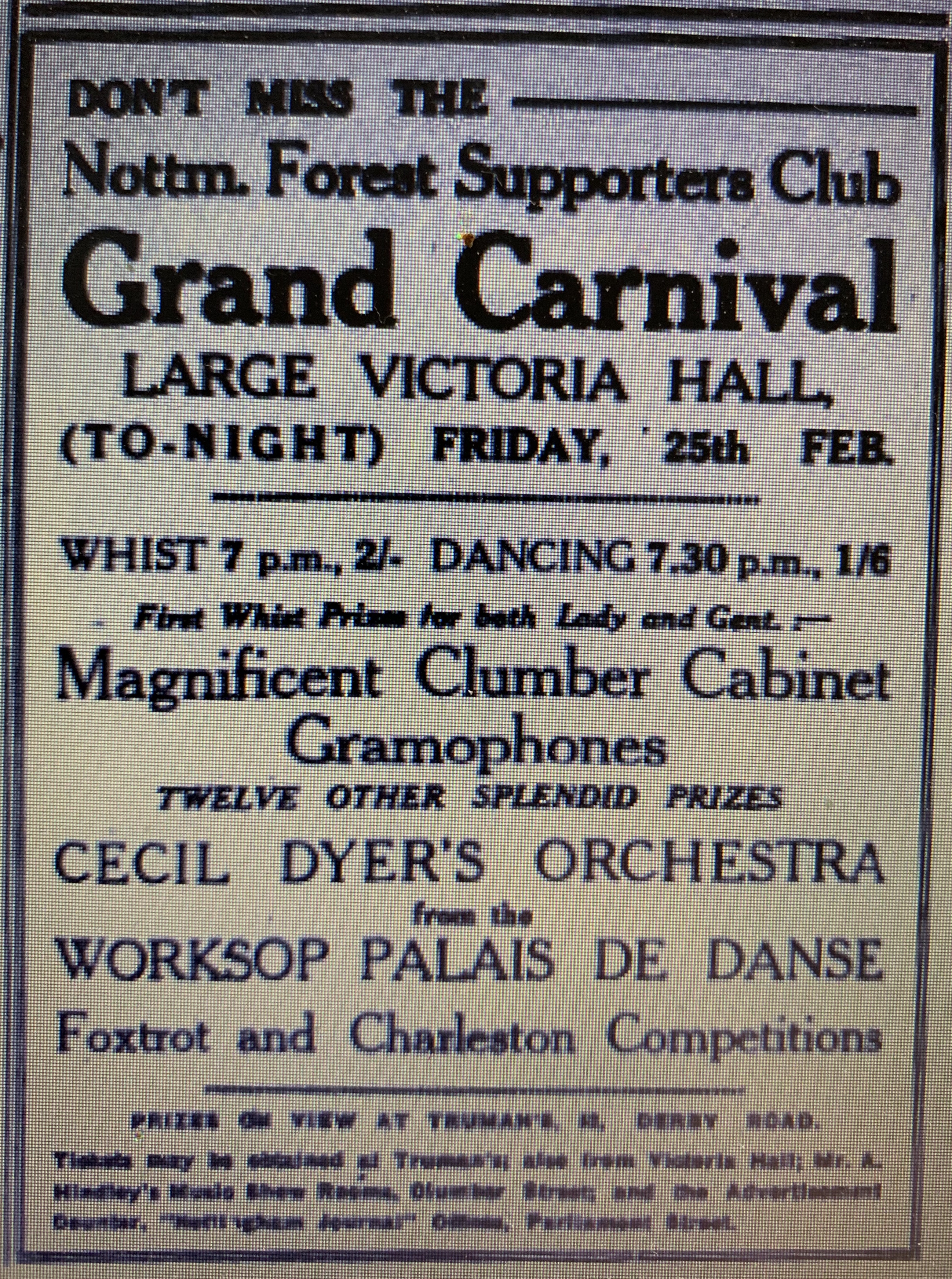
Over 600 attended and prizes were awarded for those who won games and competitions. The prizes included a made to measure gentlemen’s suit and a lady’s costume each worth 80 guineas, a gold bangle and a set of a dozen socks (4).
Further events followed including a dance and musical concert held at the beginning of October 1920 and featuring the 8 Dainty Maids group along with a comedic turn about the Battle of Waterloo (5). These events became so popular that by the end of the decade 2,000 were in attendance at the New Victoria Halls for another drive and dance gathering (6).
These large scale gatherings became a fundamental part of the NFSC’s fundraising and their appeal as a pro-active supporter driven establishment. Their events were often attended by committee members and players from NFFC and diversified into other forms of entertainment such as carnivals and, in 1930, a roller skating disco (7).
The money that these events generated was donated to the football club and always received with gratitude. Perhaps as more finance entered the game in later years the money raised from the NFSC wasn’t as essential to the club but vast sums continued to be raised. In 1978 prior to the opening game of the 1978/79 season against Tottenham a cheque for £27,000 was handed over by representatives of the NFSC to Forest Chairman Stuart Dryden (8). This sum would have paid for thirteen Garry Birtles who was, at the time, a month away from making his breakthrough into the first team. Alternatively it would have paid for almost 3% of Trevor Francis who would join the following year. Perhaps the patch of forehead which planted the ball into the Malmo net…
After some initial success in their formative months, the NFSC were joined at their meeting on Friday 27th August 1920 at the YMCA huts on King Edward Street by Mr. A Baddeley who was secretary of the Port Vale Supporters Club. With such supporter initiatives being a relatively new phenomenon (Norwich had set up a group around 1904 but there wasn’t many others around by the time Forest’s began) there was perhaps some uncertainty about the long term value of these fan led efforts. Baddeley spoke about the importance that supporters could have:
‘’Directors of football clubs cannot do everything, but spectators can do a lot, and supporters clubs can do a great deal in many ways. (They) can do much in getting local talent for your team.’’
The sourcing of players being part of the fans responsibilities is perhaps somewhat surprising but this had also been suggested by the Forest Chairman W.T Hancock previously as part of the NFSC’s scope. Baddeley suggested that members of the NFSC could assist by scouting players when Forest were away from home. With Forest being a Second Division club the onus was placed on making sure local talent was not lost to top flight competitors.
Baddeley’s final line of advice was perhaps the most interesting – he suggested the NFSC members look to engage their fellow fans and explain the rules of the game. In an effort he says to ‘’save barracking the players, and make it more comfortable for the referee.’’ (9)
One can only imagine this taking place today…
The NFSC quickly expanded and in the coming years sub-branches were emerging connected usually to suburbs and villages of Nottingham. These include Hucknall, Beeston, Radcliffe, Netherfield, Gedling and Long Eaton among others.
The fortunes of Forest on the pitch revived briefly, maybe aided by the new backing from the NFSC. A promotion to the top division was achieved in 1922 which saw an all too brief spell as a Division One club before relegation followed in 1925. It would be over three decades until Forest would return.
In the meantime the supporters mobilised beyond the events and financial support they had organised. In 1921 a plan was formed to start running travel to away games under the banner of the supporters club. Upcoming fixtures at Derby and Leicester were identified and plans were arranged with the railway provider to carry fans as part of a fans excursion (10). This organised travel continues to this day via various hard working branches of the Supporters Club who take coaches to home and away matches.
The connection with the Port Vale group also continued with Vale supporters welcomed by the NFSC before a fixture at the City Ground (11) in 1922. At premises on Wollaton Street, Port Vale supporters were welcome to join their Forest counterparts for tea and other refreshments over games of whist and billiards.
In dialogue with the football club the supporters club also made a proposal for terracing to be installed at the City Ground (12) to benefit fans and the stadium overall. Such a suggestion to the club shows not only a group with positive intentions to help move NFFC forward but also representing their fellow supporters.
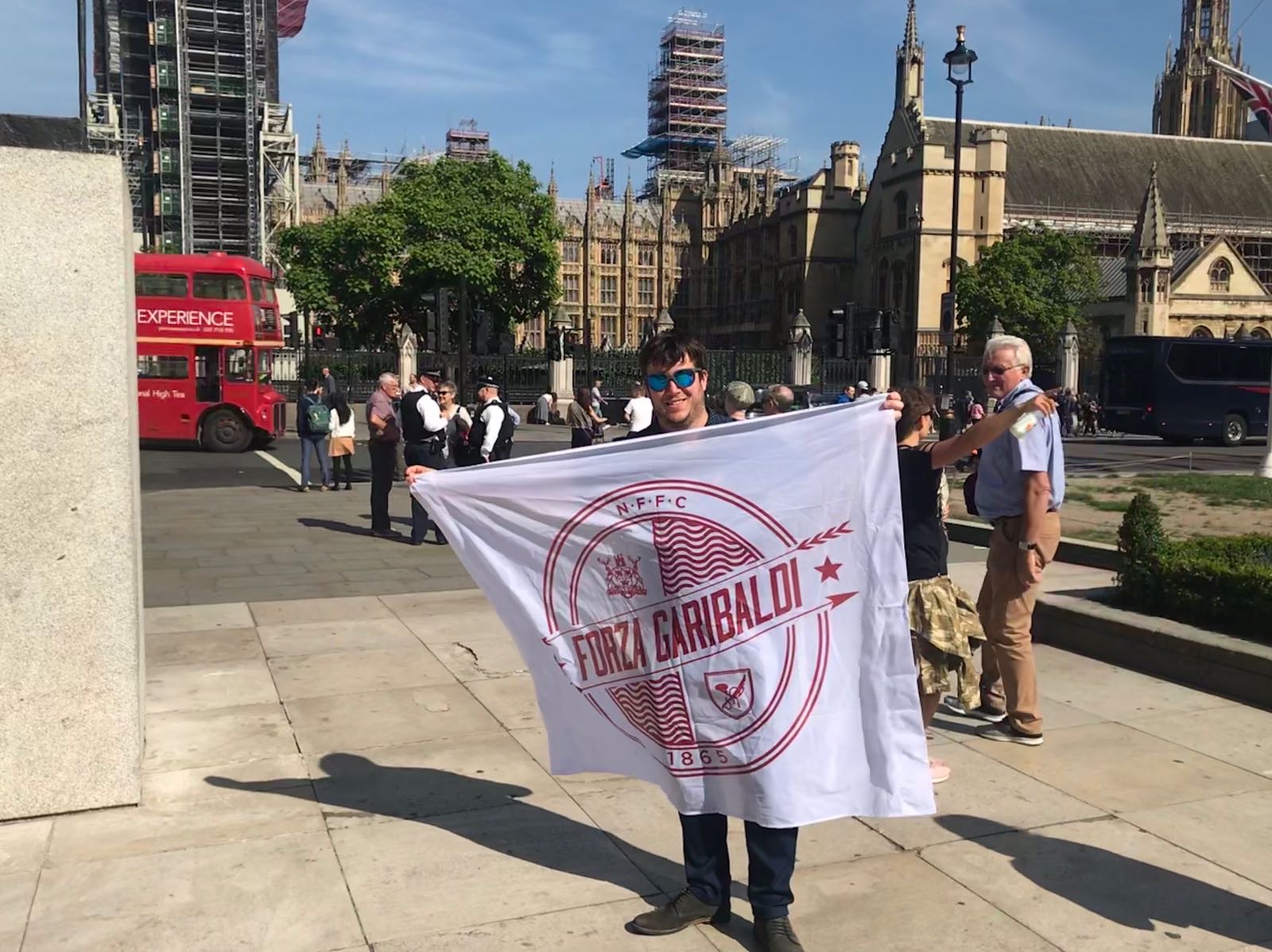
Greg and Matt from Forza Garibaldi were invited to attend a parliamentary workshop in 2018 to push for the green light for safe standing (the flag was confiscated on arrival!)
There are also some parallels with the current day quest for terracing to be installed in grounds through the safe standing system. In 2018 members of Forza Garibaldi attended a parliamentary session hosted by then Shadow Sports Minister Rosena Allin-Khan designed to gather thoughts from fans across the country. The proposals were also put to board members of NFFC on occasions in an effort for standing areas to be provided inside the City Ground. Supporter groups and the wider fanbase were also invited to have a say in the City Ground redevelopment announced in 2019.
In 1926 the NFSC, now six years into their existence, began a significant fund raising effort to finance a replacement roof on the popular side of the ground (13). The NFSC pointed to the great benefits this would bring to fans in that area, especially in winter, and set about a recruitment drive for more members to raise the necessary funds.
Some years later in 1936 the NFSC also wrote to local electorial candidates to raise awareness to transport issues around the City Ground. They provided a questionnaire to understand how each of the nominees would try and resolve the situation (14).
Another strand of activities for the supporters club was facing other fan groups and local establishments in sporting fixtures. Again usually to aid fundraising or support designated good causes. The Nottingham Evening Post (15) carried a story in August 1934 of the NFSC meeting a group from St Anns in Mablethorpe for the 7th annual charity cricket. A sum was raised in support of what the paper describes as the Mablethorpe Cripple House.
The NFSC and other Forest groups continued engaging in sporting activities which were almost always well natured. One exception to this was in 1967 when a NFSC team was involved in a riot in a football match against an Anglo-Italian side named San Paolo (16). The San Paolo team were the aggressors having been 4-1 down at the time and the referee was badly injured after being attacked by members of the losing side.
Much closer to the modern day a group known as Forest IFC (Internet Football Club) began in the nineties in various friendly games and tournaments. For a number of years they would face the opposition that NFFC were playing home or away on the morning of the match.
In the present day Forest are represented as far away as Italy by the Robin Hood Reds who compete in football tournaments in their home country wearing the Garibaldi Red. The Forza Garibaldi 5-a-side tournament has also been held for the last two years featuring 20 fan squads at the Forest Zone complex at the Forest Rec.
Into the 1930’s despite various well intentioned efforts the NFSC did lose some steam. At their November meeting in 1933 the group chairman F.B Pilkington bemoaned a lack of support which had led to them abandoning their HQ on Wheeler Gate for financial reasons. Pilkington insisted that the NFSC could not support the football club as it intended to do without a greater number of members (17).
By the end of the 1930’s much of the coverage of the Nottingham Forest Supporters Club had ended. While their work still continued there is little mention of it in the local papers. Of course this will predominantly be due to the outbreak of the Second World War in 1939 with the league calendar abandoned and many players and fans being called up to serve.
Another factor could be the formation of the Forest Sportsman’s Club in 1941 (18). This operated in similar fashion to the Supporters Club and could potentially have been a re-badging of the NFSC although it seems likely that this was an alternative offering. With NFFC in a perilous financial state heading into the war the assistance from the fanbase was vital to ensure the club survived the conflict.
In 1946 after hostilities had ended, manager Billy Walker met members of the Sportsman’s Club and thanked them for their donation of £510 to aid the running of NFFC (19). This, at the time, was not an insignificant sum of money and shows the sterling work of the Sportsman’s Club in doing their part as the country emerged from war. Walker also took the opportunity to request more financial support to help finance a new ‘double decker’ stand at the City Ground along with First Division standard facilities and gymnasium.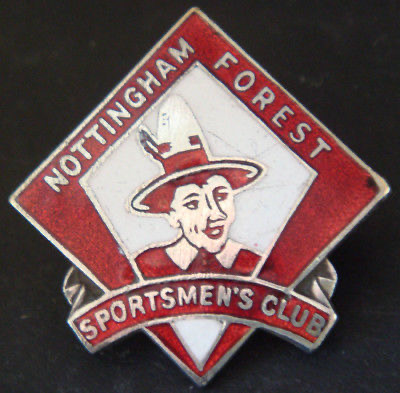
The support lent to NFFC by the Sportsmen’s Club also materialised in providing gear for the players. Ahead of the 1949/50 campaign they donated a set of maroon tracksuits which the Nottingham Journal covered with a photograph of Billy Walker with club captain Bob McCall and trainer Tommy Graham wearing the new uniform (20).
A year later the club benefitted again from the Sportsmen’s Club’s generosity via a navy blazer being presented to all club staff (21). The blazers featured the club badge, the Nottingham coat of arms, embroidered on the breast pocket. 28 years later very similar blue blazers were worn by Brian Clough and Peter Taylor as the team lifted the Division One championship title. This time the Forest tree was on the pocket.
The famous ‘Tricky Tree’ is another example of fan involvement being of benefit to NFFC. In February 1973 a competition was launched via the local newspapers inviting designs for a new club crest (22). This was due to a copyright issue with the coat of arms badge which NFFC could not claim exclusive rights to. A prize of £25 was offered for the chosen design which was to be in line with the following specification:
‘The size of the proposed badge should not be more than six inches wide or in depth and it must be adaptable for reproduction in not more than three colours plus white and also for use in one colour only.
‘It must be suitable for reproduction in various letterheads, shirt badges, ties, flags, souvenirs, pin badges, etc. The sponsors are looking for original ideas but the successful entry may have to be adapted by a professional designer in order that it can be reproduced in various media. Entry in the competition is on the understanding that the winning design becomes Forest’s copyright.’
855 submissions were received in total from as far afield as Australia across an adult and a junior section according to the official matchday programme for the Sunderland game in April 1974(23):
‘Many people included an exact replica of the archer in the ‘Home Brewery’ badge and many made a ‘Stag’ their main feature. Some combined a tree, Trent Bridge and the river, whilst others made references to local industry with tobacco leaves, bicycles, mortar and pestle etc. Old Forest favourite Wally Ardron included some Nottingham lace and a Raleigh bicyle in his design.
The adjudicating panel certainly had a difficult job of selection from the many excellent ideas submitted before announcing the winning entries.’
The panel chose a submission by David Lewis, a lecturer at Trent Polytechnic, as their preferred artwork. His simple tree on the river design was adopted by the club as their new crest. It remains very possibly the greatest and most recognisable crest in world football.
The post war resurgence of Nottingham Forest was steady and not without catastrophe. A spell in the third tier arrived before eventually Forest clawed its way back into the top division in 1957. Two years later Forest made their maiden voyage to Wembley and Billy Walker, grateful for the support offered by the supporter groups guaranteed them a priority on tickets for the F.A Cup Final against Luton. It’s possible that this was the beginning of such an arrangement that continues today with current NFSC members receiving priority on match tickets through their subscription.
The current Nottingham Forest Supporters Club has been in its existing format since the mid 1970’s. By 1977 it possessed 12 branches but the title winning season of 1978 led to many more. By August of that year the NFSC, on the back of a first ever league championship and League Cup victory for The Reds, had expanded to 72 sub-organisations (24).
Recent years have also seen a rise in new groups forming internationally, some officially part of the wider supporters club and others just wanting to create informal networks with supporters in their area. North America in particular has witnessed a sizeable new supporter movement made up of established groups from the likes of New York, Toronto, Hawaii

and Chicago. The various groups largely fall under the banner of the North America Supporters Club with members of the main body also involved with the creation of the Forest Fancast which has provided another form of connection for US based supporters with the goings on in Nottingham.
While we tend to think of organised fan groups as a relatively new initiative it’s clear that such endeavours have been around for a lot longer. And have contributed positively to the wider football club at Forest. Yet importance should also be placed against individuals or less established groups who have also had a significant role as supporters.
Before the internet the paper fanzine was a vital part of fans expressing themselves alongside the letters pages in local newspapers – The Brian and Blooming Forest were two such examples. While print form was sadly lost to the internet there has been a revival through Bandy & Shinty and, recently, the wonderfully entitled Trevor Francis Tracksuits which donates profits from each issue to a different charity.
One string to the fanzine bow was to share various ideas and thoughts with fellow fans. This could include new suggestions for terrace songs which could then get picked up and spread at games. Such an idea would most probably be ridiculed now but it’s interesting to see how similarly fans have mobilised themselves in this regard.
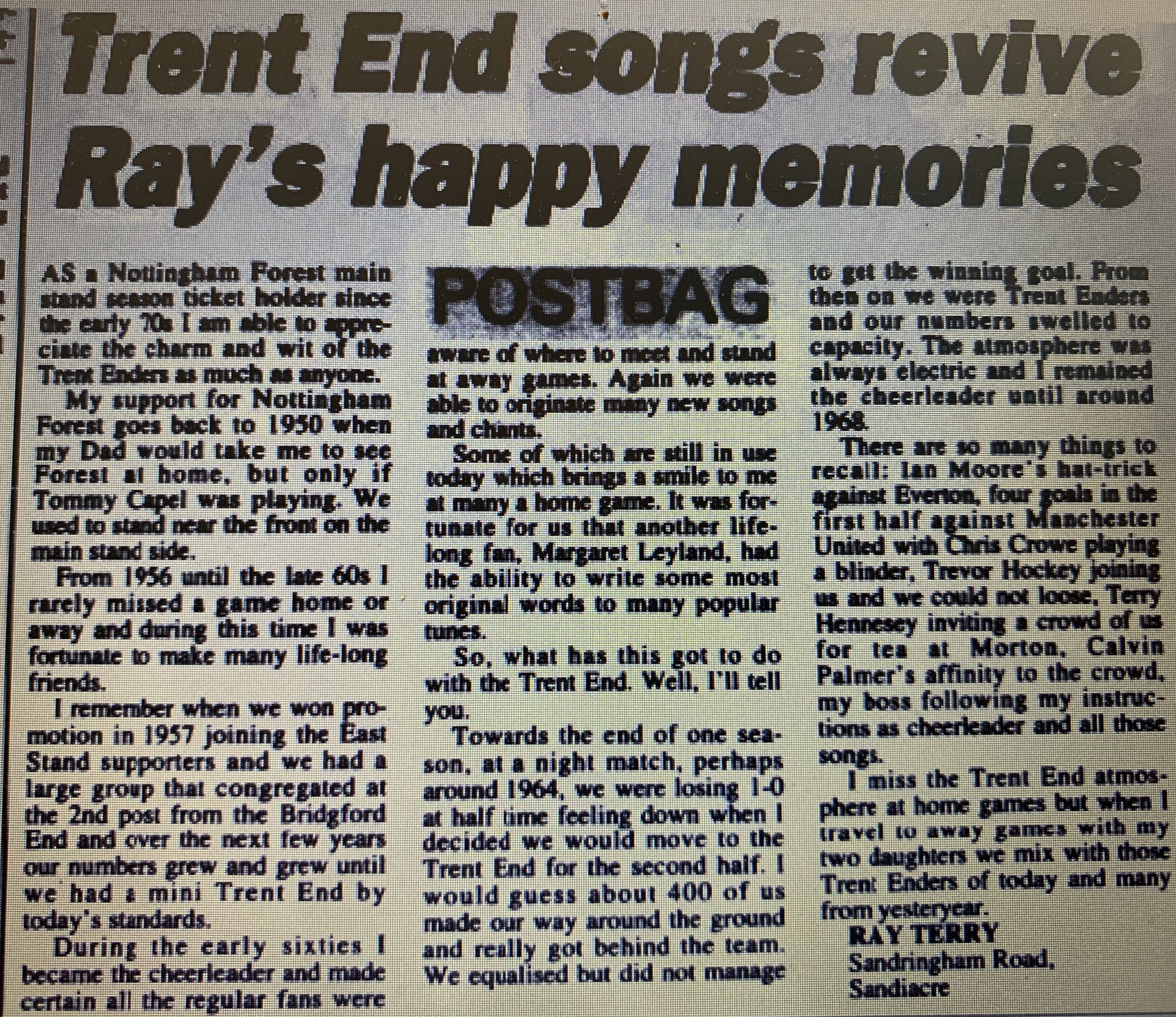
A latter from Ray Terrry of Sandiacre to the Mansfield & Sutton Recorder in 1994
In 1994 a supporter named Ray Terry from Sandiacre wrote to the Mansfield & Sutton Recorder (25) as the end drew near for the old Trent End. In his published letter Ray recalls his role as ‘cheerleader’ at home and away games in the 50’s and 60’s. Most interesting was the level of organisation he claims to have been involved with to help improve the atmosphere:
‘‘During the early sixties I became the cheerleader and made certain all the regular fans were aware of where to meet and stand at away games. We were able to originate many new songs and chants. Some of which are still in use today which brings a smile to me at many a home game.
It was fortunate for us that another lifelong fan, Margaret Leyland, had the ability to write some most original words to many popular tunes.’’
Margaret Leyden (Ray possibly got the name wrong in his letter) is perhaps not a name familiar with many today but her influence on the terraces still continues via her song craftsmanship many years ago. Margaret was responsible for creating many of the unique and brilliant chants, some of which are still heard today. It is very possible that Mull of Kintyre was adopted by her in tribute to the ‘Boys in the red shirts from the City Ground.’
Another individual certainly worthy of acknowledgement is Stuart Astill. In April 2014 Stuart missed a Forest game for the first time in 1,786 matches, a run that stretched back to 1973, due to an operation. Alongside his impressive record Stuart was a key member of the Nottingham Forest Supporters Club; he was secretary of the main arm for twenty years. Sadly, Stuart passed away in September 2017.
While often maligned, the likes of Twitter have also given rise to help modern fan-led causes. In January 2017 social media was utilised to fight the then ownership – the result was several hundred voicing their discontent in the Peter Taylor Stand car park before a game.
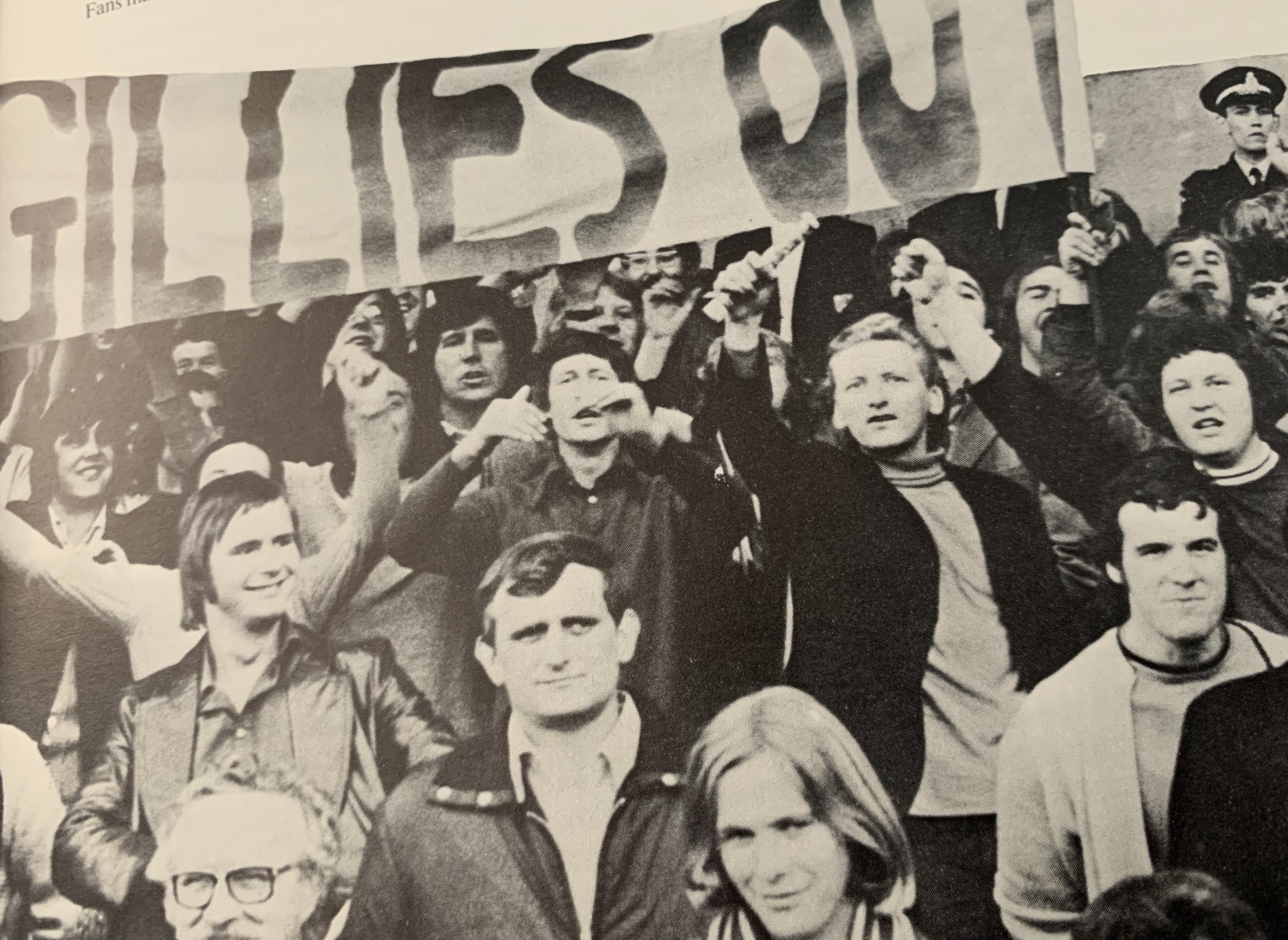
Supporters hold up a ‘GILLIES OUT’ banner in 1972
The same has happened across the eras – in 1938 fans protested in front of the directors box after a game against Blackburn (26) while in 1972 supporters mobilised with banners to campaign for manager Matt Gillies to be sacked. The Chairman at the time, Jim Willmer, spoke out against the supporters after Gillies resigned:
‘’I personally feel the crowd have been cruel to Mr Gillies. They have not achieved much except to make the players nervous wrecks in their home games.’’
Large scale protests were a backdrop to the club in the late nineties. A long, drawn-out takeover saga began with shareholders blocking the preferred choice by fans – a consortium led by local business and Forest supporter Sandy Anderson (which promised immediate investment in the team of £13m) was rejected in favour of an offer from Nigel Wray and Irving Scholar. The Nottingham Forest Supporters Club organised an extraordinary general meeting in the Main Stand car park to protest against this move with a wider protest held before the next home game against Chelsea (27).
NFSC Chairman Mel Hart explained: ‘’The Supporters Club are deeply frustrated by the actions of a minority of shareholders which have pushed the club nearer to possible relegation in delaying backing for the team in terms of funds being made available.’’
These protests continued after Wray and Scholar eventually acquired the club with a large demonstration occurring after a FA Cup defeat to Portsmouth in 1999. Manager Dave Bassett left Forest in the immediate aftermath of that loss having also, perhaps unfairly in hindsight, felt the wrath of fans gathered outside the Main Stand.
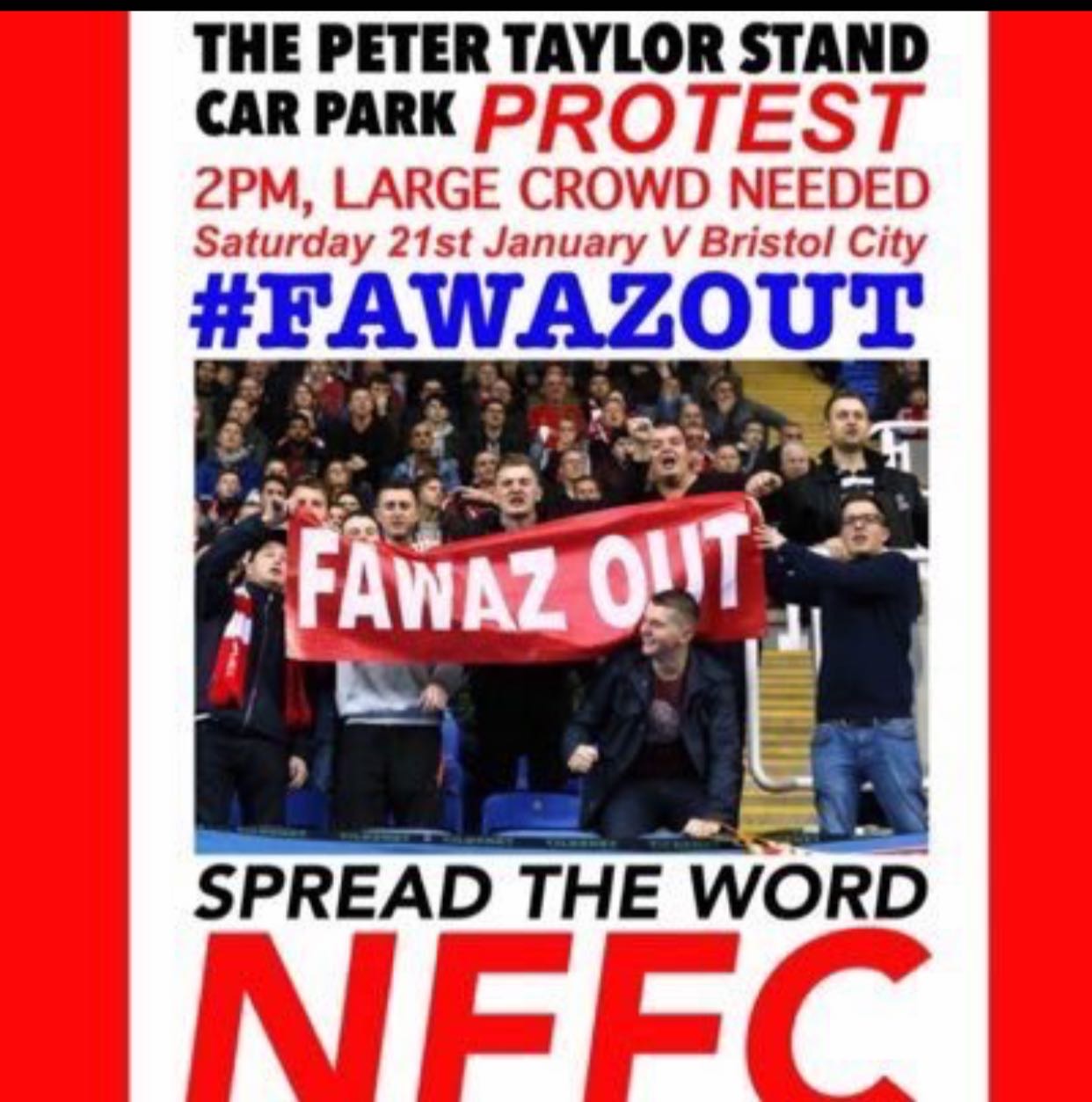
Fans mobilised to protest against the ownership in 2017
As supporters we will not always agree with each other. The actions of one group of supporters will almost always not be universally popular. The fan protests against the Nigel Doughty ownership in 2011 were incredibly polarising and even the actions to remove the Kuwaiti regime drew ire from some sections.
We could fall into the trap of believing that such inter fan hostilities are a new thing, fuelled by social media, but it’s likely to have existed for as long as there have been supporters at games. An example of this can be found in the letters page of the Football Post in 1963. Two supporters voiced their displeasure with the Forest Sportsman’s Club for their social occasions:
‘’What do they think the Nottingham Forest Sportsmen’s Club is? A social dish? It strikes us that they shouldn’t be supporting football at all, if they are so socially inclined they should join the local bingo or the nearest dancing group. It’s not right to mix dancing etc with football.’’
Whether we agree with such ventures or not there is clearly some strength in fans mobilising to work towards a cause they believe in. And it is important supporters continue to do so, especially in an age where it could be argued that the sport of football moves further and further away from its fans.
A century on from the birth of Forest’s supporters club it is sad that we find ourselves barred from games at the present time. Yet there is still a function even away from games in championing the club where necessary, helping the club where necessary and even questioning and challenging it in certain circumstances. The 2018 Memorandum of Understanding signed between the club and the Supporters Trust hopefully provides one method of doing this and also bring us back to the initial group in 1920 who were given a voice at the club via their vote at the AGM.
Every single fan group referenced in this piece is reliant on supporters, not the football club, to exist and thrive. To repeat what the Port Vale representative told the first Forest fan group in 1920: ‘’Directors cannot do everything, but spectators can do a lot.’’
In the aftermath of a horrific season finale the onus is once again on all Forest supporters to help lift the club, however we see fit.
Here’s to the next 100 years.
Source Material
1) Nottingham Journal, Thursday 15th April 1920
2) Nottingham Journal, Thursday 29th April 1920
3) Nottingham Journal, Saturday 26th June April 1920
4) Nottingham Journal, Tuesday 3rd August 1920
5) Nottingham Journal, Tuesday 5th October 1920
6) Nottingham Journal, Monday 11th February
7) Nottingham Journal, Tuesday 11th November 1930
8) Official Matchday Programme, NFFC v. West Brom, 2nd September 1978
9) Nottingham Evening Post, Saturday 28th August 1920
10) Nottingham Journal, Wednesday 14th September 1921
11) Staffordshire Sentinel, Friday 27th October 1922
12) Nottingham Journal, Saturday 17th June 1922
13) Nottingham Journal, Tuesday 12th October 1926
14) Nottingham Journal, Saturday 7th November 1936
15) Nottingham Evening Post, Wednesday 8th August 1934
16) Long Eaton Advertiser, Friday 17th March 1967
17) Nottingham Journal, Tuesday 21st November 1933
18) Nottingham Journal, Wednesday 12th November 1941
19) Nottingham Journal, Saturday 9th November 1946
20) Nottingham Journal, Saturday 30th July 1949
21) Nottingham Evening Post, Thursday 9th November 1950
22) Football Post, Saturday 3rd February 1973
23) Official Matchday Programme, NFFC v. Sunderland, 24th April 1973
24) Nottingham Football Post, Saturday 19th AUGUST 1978
25) Mansfield & Sutton Recorder, Thursday 17th February 1994
26) Daily Mirror, Monday 14th November 1938
27) Football Post, Saturday 2nd March 1963
Thanks to the archives of the Nottingham Post, Football Post and Nottingham Journal in particular for helping with the narrative. This isn’t intended to be the official history of the Supporters Club or the supporters at NFFC. What it aims to do is demonstrate the importance of fans as part of the football club with some selective examples to hopefully provide an interesting read.
Matt
